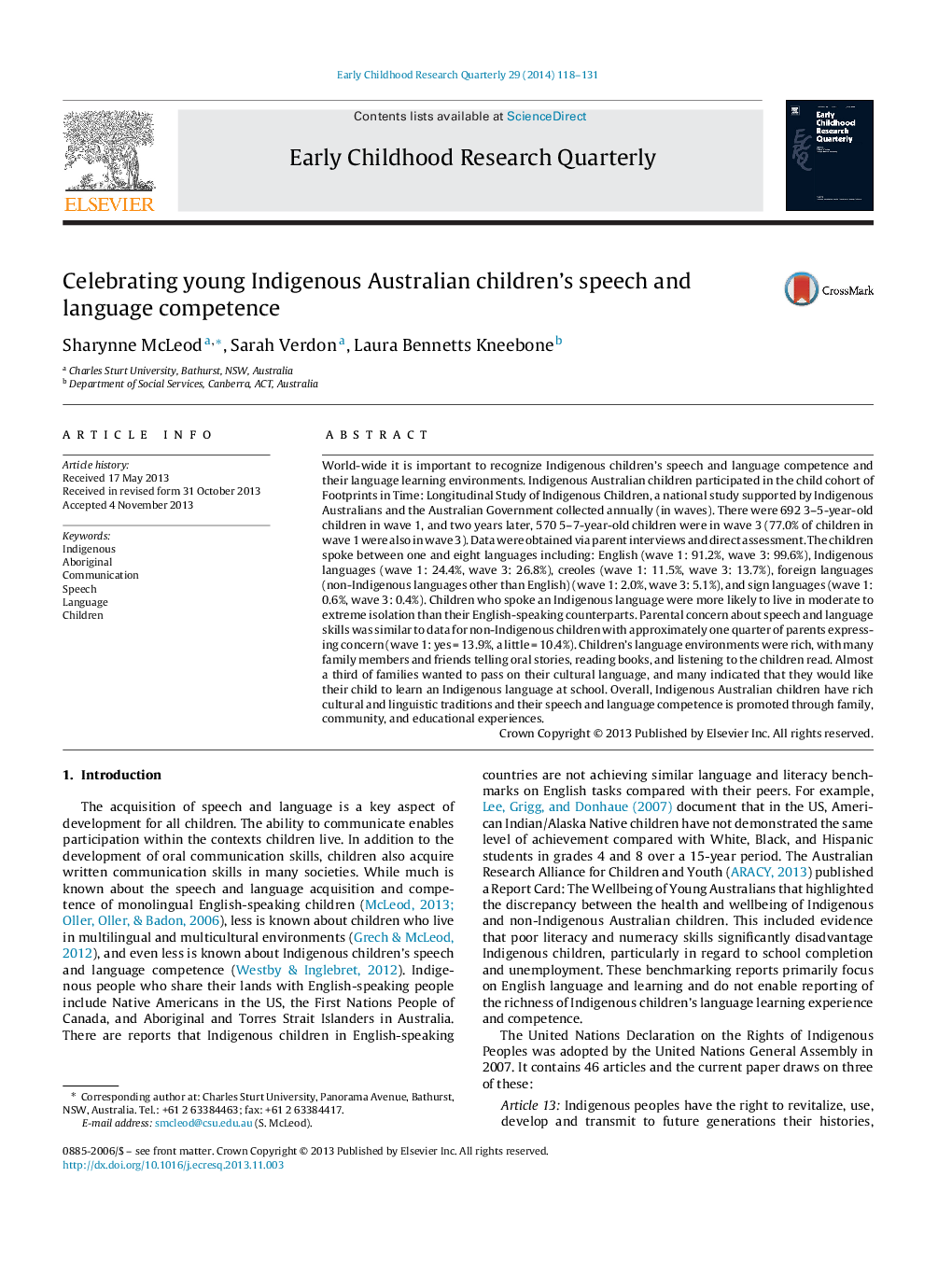| کد مقاله | کد نشریه | سال انتشار | مقاله انگلیسی | نسخه تمام متن |
|---|---|---|---|---|
| 353902 | 618952 | 2014 | 14 صفحه PDF | دانلود رایگان |
• This paper describes 692 Indigenous Australian children's language competence.
• Cross-sectional and longitudinal data are reported from 3 to 7 years of age based on parent report and direct assessment.
• Children spoke between one and eight languages: English, Indigenous languages, creoles, foreign languages, and sign languages.
• Children who spoke an Indigenous language were more likely to live in moderate to extreme isolation.
• Language environments were rich. Family members and friends told stories, read books, and listened to the children read.
World-wide it is important to recognize Indigenous children's speech and language competence and their language learning environments. Indigenous Australian children participated in the child cohort of Footprints in Time: Longitudinal Study of Indigenous Children, a national study supported by Indigenous Australians and the Australian Government collected annually (in waves). There were 692 3–5-year-old children in wave 1, and two years later, 570 5–7-year-old children were in wave 3 (77.0% of children in wave 1 were also in wave 3). Data were obtained via parent interviews and direct assessment. The children spoke between one and eight languages including: English (wave 1: 91.2%, wave 3: 99.6%), Indigenous languages (wave 1: 24.4%, wave 3: 26.8%), creoles (wave 1: 11.5%, wave 3: 13.7%), foreign languages (non-Indigenous languages other than English) (wave 1: 2.0%, wave 3: 5.1%), and sign languages (wave 1: 0.6%, wave 3: 0.4%). Children who spoke an Indigenous language were more likely to live in moderate to extreme isolation than their English-speaking counterparts. Parental concern about speech and language skills was similar to data for non-Indigenous children with approximately one quarter of parents expressing concern (wave 1: yes = 13.9%, a little = 10.4%). Children's language environments were rich, with many family members and friends telling oral stories, reading books, and listening to the children read. Almost a third of families wanted to pass on their cultural language, and many indicated that they would like their child to learn an Indigenous language at school. Overall, Indigenous Australian children have rich cultural and linguistic traditions and their speech and language competence is promoted through family, community, and educational experiences.
Journal: Early Childhood Research Quarterly - Volume 29, Issue 2, 2nd Quarter 2014, Pages 118–131
